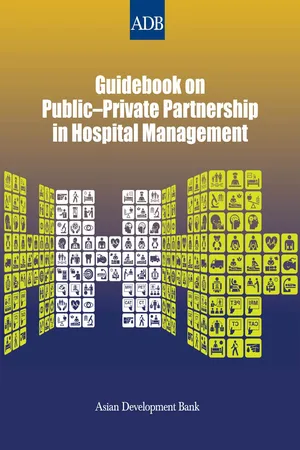![]()
Annex 1
Department of Health Administrative Order
on Public–Private Partnerships in Health
(No. 2012-0004)
| Republic of the Philippines
Department of Health
OFFICE OF THE SECRETARY | |
MAR 01 2012
ADMINISTRATIVE ORDER
No.2012-0004
SUBJECT:Policy Framework for Public-Private Partnerships in Health
I.BACKGROUND AND RATIONALE
In pursuit of the objectives of Universal Health Care or “Kalusugang Pangkalahatan (KP)”, as defined in Administrative Order No. 2010-0036 (The Aquino Health Agenda: Achieving Universal Health Care for All Filipinos), the Department has committed to engage in more Public-Private Partnerships (PPPs) specifically to enable physical improvements in government health facilities. PPPs have also been looked upon by no less than the President of the Republic as a key national development instrument, the furtherance of which is therefore a priority of all government agencies, including the Department of Health.
The private sector is deemed to have intrinsically better capabilities in some areas, such as more timely financing, operational efficiency, highly-responsive services, and even dominant market presence. If optimally harnessed, more cooperative undertakings with the private sector may help significantly address some of the constraints and inefficiencies inherent in public-only provision of health services.
The Philippine government has long recognized the advantage of adopting PPPs in public sector undertakings, especially for large-scale priority infrastructure developments. The mechanisms for the latter had been laid out in the Republic Act 7718, otherwise known as the Amended BOT Law. While the latter account for several possible variants of PPPs, the included listing is still not exhaustive. Separate guidelines for Joint Ventures, another PPP modality, have been drawn up by the National Economic and Development Authority (NEDA).
The local PPP experiences in the health sector have thus far been varied. While many such endeavors have been documented, most of these have been found to be non-contractual in nature (with consequent minimal accountabilities and performance references), and many have been unsustainable. It also remains to be determined if existing and upcoming PPPs in health substantially address the fundamental UHC goal of enhanced access to health care for the country’s poor. All these assume greater significance in the light of the reported United Nation’s consideration of the Philippines as the Center of Excellence for PPPs in Health.
It is apparent from the foregoing that while the national policy on PPPs has been set, much remains to be clearly delineated and effectively adapted for health services. This Administrative Order has therefore been crafted in order to better define The applicability and prioritization of the relevant policies, streamline their implementation, and enable the continuing evaluation of PPPs in the health sector.
Building I, San Lazaro Compound, Rizal Avenue, Sta. Cruz, 1003 Manila • Trunk Line 651-7800 Direct Line: 711-9501
II.SCOPE AND COVERAGE
This issuance shall apply to the entire health sector, from both the public and private sectors, the DOH bureaus, national centers, hospitals, and attached agencies especially Philippine Health Insurance Corporation (PhilHealth), which arc involved in the support for and provision of health services.
III.GOAL AND OBJECTIVES
A. Goal
B. Objectives
The DOH aims to:
1.prioritize PPPs that meet national and local government objectives of addressing adequately the health service needs of the poor ;
2.promote and provide a focused approach that harmonizes the existing PPP-applicable legal and administrative mandates as well as internal strategies and procedures;
3.foster a culture that engenders transparency, fairness, and robust competition;
4.develop and integrate in the overall PPP efforts, incentives, which are aligned with both departmental goals and expected health outcomes; and
5.continually assess the collective experiences on PPPs in the health sector so as to be able to adapt public policies and approaches to new developments and needs to sustain accessibility to quality healthcare.
IV.DEFINITION OF TERMS
1.Health sector - refers to health systems, including all institutions, organizations, enterprises and entities, involved in actions that protect, promote or advance the health status of individuals or populations; conceptually includes all aspects of society that influence health status but operationally focuses on those entities specifically organized to provide or govern the provision of health services and goods.
2.Public sector - refers to health providers (individual practitioners, health centres, hospitals, organizational units, agencies) within the rules and regulations of the government and all providers under the administration and control of the DOH, other national agencies (DepED, DOLE, DND, etc) or local governments (provincial, city or municipal governments).
3.Private sector - refers to health providers and facilities (individual practitioners, clinics, hospitals, facilities, d...

